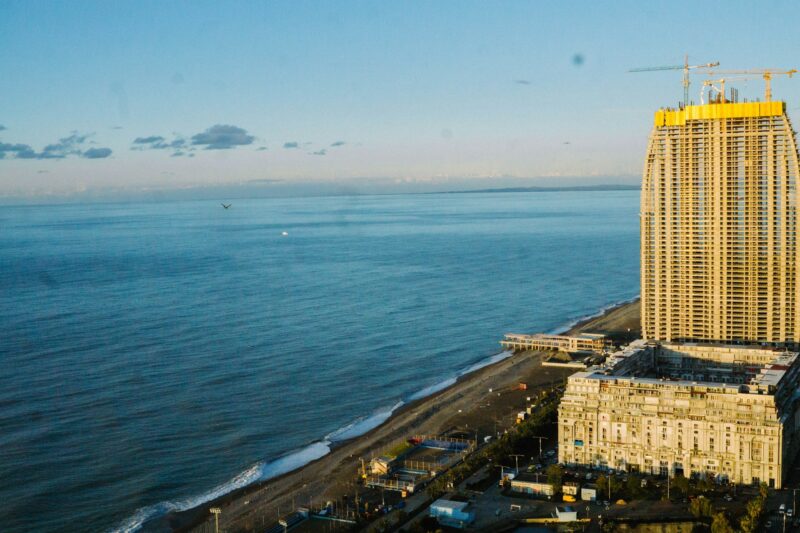Underwater construction has become an essential part of advancing infrastructure in our interconnected world. From supporting global trade through ports to enabling clean energy with marine turbines, subsea projects are foundational for modern development. But what makes this field indispensable, and how does it contribute to our society’s growth?
This blog dives deep into the benefits, applications, and advancements in underwater construction, revealing its undeniable role in building sustainable and efficient infrastructure. Read on to discover how it’s driving progress beneath the surface.
Transforming Waterways into Modern Developments
Supporting Global Trade with Robust Marine Infrastructure
Ports and harbors form the backbone of international trade, handling roughly 80% of global goods. Underwater construction ensures these hubs can support massive shipping fleets with structurally sound docks, breakwaters, and channels. By using cutting-edge technologies and methods like dredging and bottom-mounted construction, marine infrastructure projects bolster the efficiency of worldwide commerce.
Aside from sustaining global supply chains, underwater innovation enhances harbor depth and capacity, allowing larger vessels to dock safely while protecting local marine ecosystems.
Clean Energy through Underwater Engineering
The demand for clean energy has fueled advances in subsea construction, particularly for offshore wind farms and tidal power systems. Submerged turbines, anchored foundations, and dynamic cable systems are examples of underwater construction benefits in sustainable energy efforts.
This technology is also reducing fossil fuel dependency, reinforcing the subsea construction importance in achieving global energy goals. For example, floating platforms enable wind turbine installations in deep-sea locations once deemed unsuitable.
Preserving Coastlines and Reducing Environmental Risks
Underwater construction is instrumental in combating erosion and safeguarding coastal cities vulnerable to rising sea levels. By constructing seawalls, artificial reefs, and underwater barriers, experts protect critical land areas while reducing environmental risks.
These structures also improve biodiversity, demonstrating how responsible marine engineering can balance infrastructure needs with ecological health. A great example is artificial reef structures that restore marine habitats while shielding coastlines from wave damage.
Advancing Urban Development with Subsea Tunnels
Subsea construction isn’t limited to the natural world—it directly supports urban growth, connecting cities via tunnels built beneath rivers and seas. These vital links, such as subway systems and highway networks, accommodate millions of commuters and help reduce congestion in populated areas.
Projects like the Channel Tunnel (UK-France) highlight the importance of underwater construction on a global scale, bridging geographic boundaries and promoting economic growth.
Maintaining Water Networks for Industrial and Daily Use
Municipal and industrial water systems often rely on submerged pipelines to ensure the provision of resources. Whether it’s freshwater supply lines, wastewater systems, or chemical transport, underwater construction keeps these complex utilities functioning seamlessly.
Materials like high-density polyethylene (HDPE) and steel are extensively used in subsea pipelines for their durability and resistance to corrosion. Constructing these pipelines involves meticulous planning, ensuring minimal disruption to water ecosystems.
Enabling Innovation in Subsea Construction
Advanced Technology Driving Underwater Projects
The rise of advancements like remotely operated vehicles (ROVs) and autonomous underwater vehicles (AUVs) has enhanced underwater construction capabilities. These machines perform inspections, welding, and placing heavy materials at significant depths where human divers cannot reach safely.
Additionally, tools like underwater sensors and sonar mapping aid engineers in project precision, reducing risks and improving construction timelines. With organizations like Central States Underwater leading the charge, subsea construction has never been more efficient.
Collaboration Enhances Project Success
Modern underwater projects require robust collaboration among civil engineering firms, marine biologists, and local authorities. This interdisciplinary approach ensures construction adheres to safety, environmental, and economic guidelines, preserving aquatic life while meeting infrastructure goals. Whether building offshore oil rigs or bridges with deep foundations, teamwork is the keystone for successful results.
Why Underwater Construction is Crucial for the Future
Subsea construction plays a pivotal role in building resilient and efficient infrastructures that sustain our modern way of life, from supporting local economies and global trade to enabling sustainable energy. Investments in state-of-the-art underwater machinery and materials have made it possible to balance infrastructure development with environmental responsibility.
Whether you’re in construction, urban planning, or engineering, it’s time to recognize underwater construction as central to addressing tomorrow’s challenges in energy, urbanization, and the environment.


